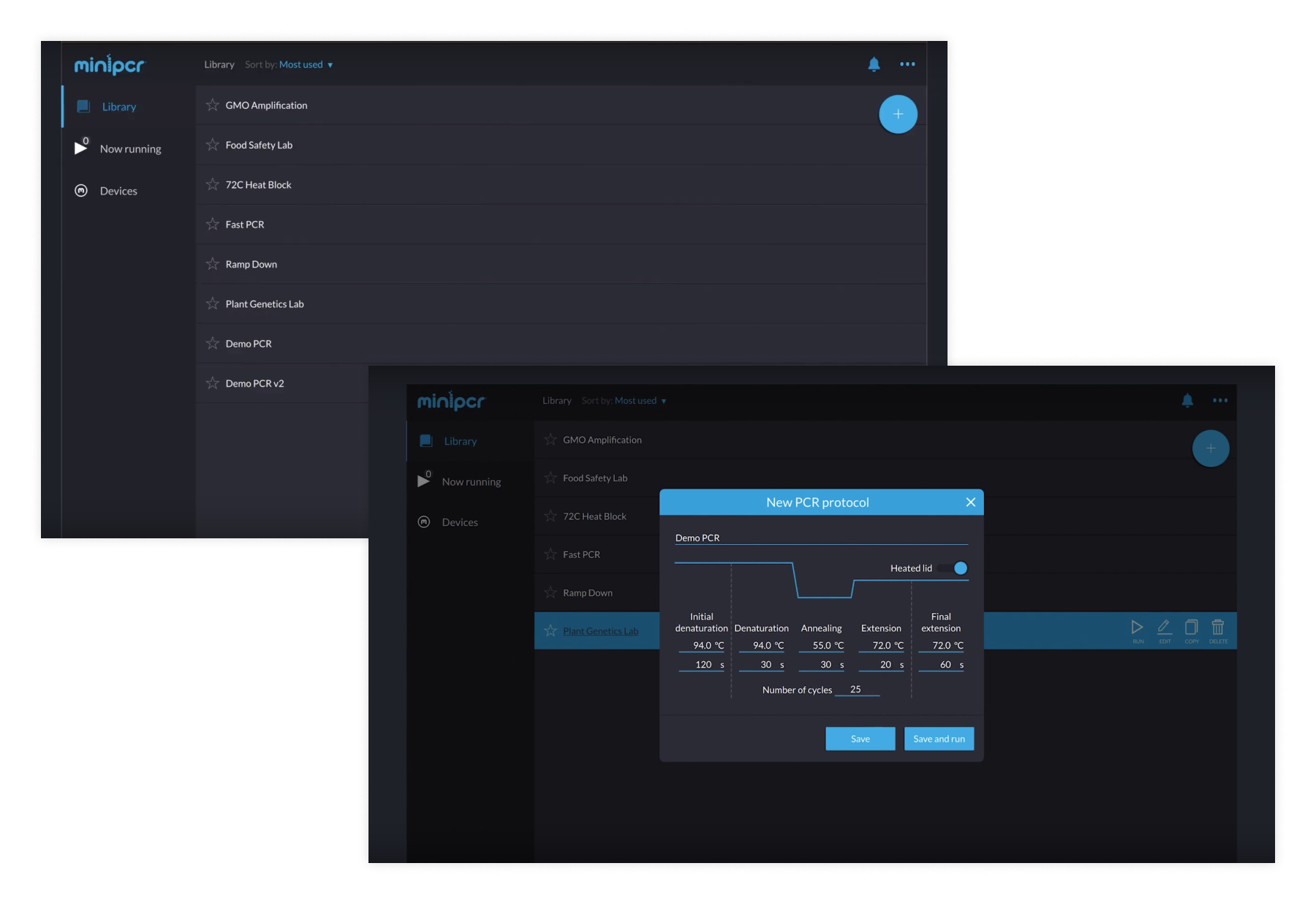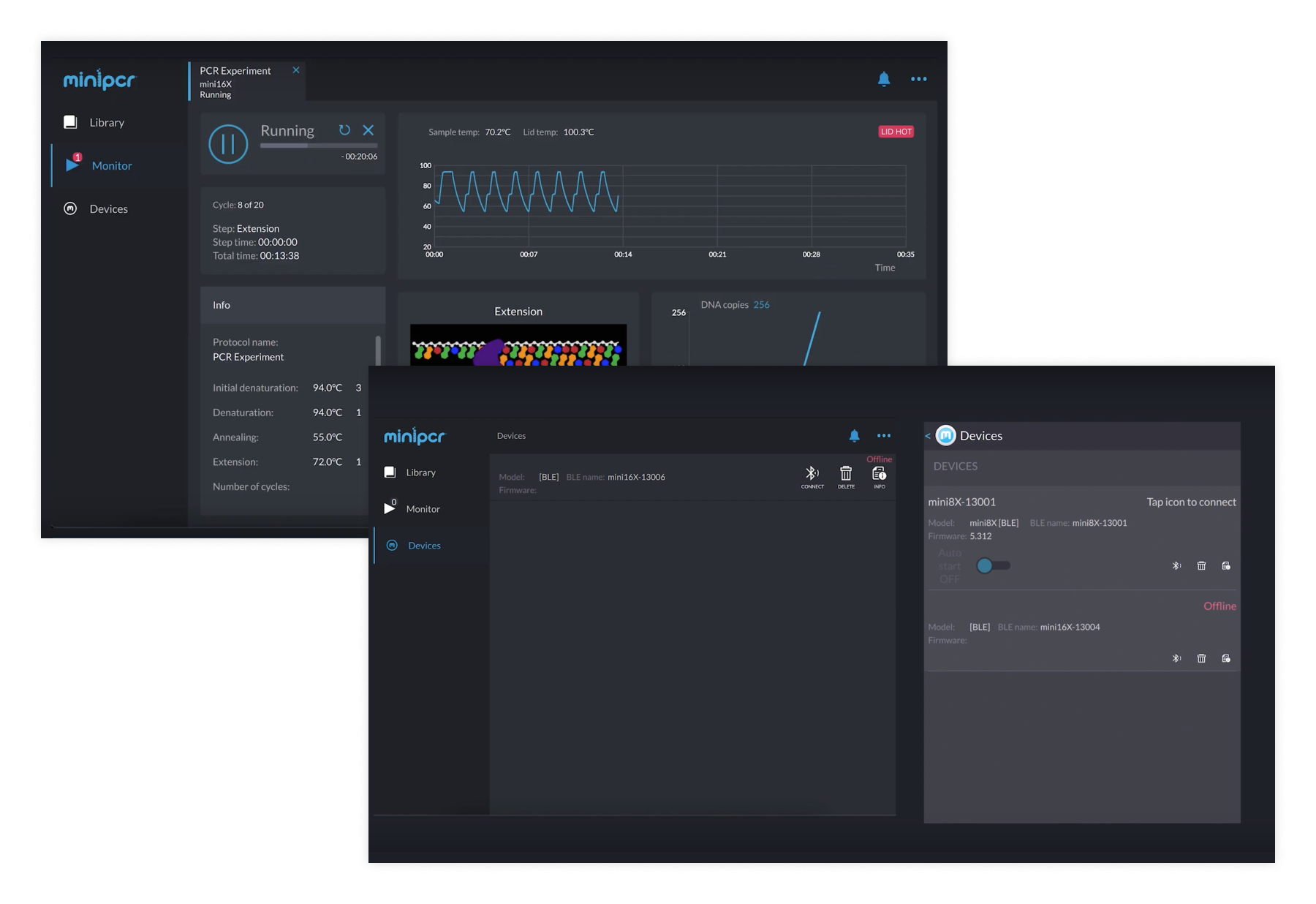Introduction
Our collaboration with the miniPCR startup resulted in software employed in one of NASA’s research bases in space. This project encompassed embedded systems, C++, Qt framework development, and existing firmware improvement. We also made the MiniPCR software accessible to the education sector by crafting an app dedicated to Chromebooks and Android platforms.
Would you like to know more? Here's our take on that project.
In this article:
- Introduction & Client's Background Go to text
- Research & Collaboration Go to text
- Design & Development Go to text
- Results & Impact Go to text
- Conclusions Go to text
Introduction & Client's Background
This entry is yet another example of what tailored-to-needs software means for a cutting-edge technology startup.
Before we jump right into the software development details, let us introduce you to the PCR definition.
PCR, or Polymerase Chain Reaction, is a widely used molecular biology technique that allows for the amplification of a specific DNA segment.
It is one of the fundamental techniques in molecular biology, with broad applications across various fields of science and medicine.
Just like any other field in advanced science, PCR testing massively benefits from automation or digitization.
That is exactly why MiniPCRbio, a USA-based startup from Boston, decided to combine mini thermal cyclers with user–friendly software, challenging the status quo across PCR-testing laboratories.
They began their journey at MassChallenge, a large-scale competition and accelerator for startups, where they received their recognition, followed by a first round of funding.
This was also the moment when we, Milo Solutions, came into play as their software provider.
Research & Collaboration
Main issues that PCR-focused laboratories faced at that time were a lack of well-designed apps – accessible to both younger and older generation of lab technicians.
Our team collaborated closely with MiniPCR scientists to understand their unique needs and the project's main objectives.
It is also worth adding that the client's requirements were partially based on an early version of the application that we had developed for them previously.
The MiniPCR’s software required:
- Transparency and interactivity – Designed for maximum engagement,
- Easy connectivity - USB and Bluetooth-ready,
- Popular operating systems integrity – Compatible with Windows, Mac, Chromebook, iPad/iPhone, and Android.
Fortunately for each challenge, we found a suitable solution.
Design & Development
We began the design phase as usual – with an analysis of general mockups provided by the client. Such sketches create the baseline for developing detailed screens and functionalities.
Since PCR test-running machines must be compatible with standard PCR tubes and multiple reagents, we wanted our app to allow users to create a wide variety of thermal programs.
At this point, it is important to add that MiniPCR thermal cyclers were available in two versions: 8X and 16X.
The division is simple.
While the mini 8X can hold eight samples at a time while the mini 16X can hold 16 samples at a time.
During the development phase, we also ensured that both devices could run fully customizable PCR heat block and temperature ramp protocols, as well as Flex programming allowing for virtually unlimited options, including touchdown.

Our development team made sure that both the mini 8X and mini 16X are compatible with the most popular operating systems at a time, including:
- Windows,
- Mac,
- Linux,
- Android,
- iOS for iPhones and iPads,
- Chromebooks (with access to the Google Play Store).
Such a robust approach allowed our application to be fully responsive and provided comfortable use on any personal device, like a smartphone, tablet, or laptop.
We also adapted the application for English and Polish users, ensuring broad accessibility.
For ease-of-use and functionality maximalization we made sure that all the devices were able to connect via a USB or low-energy Bluetooth.
Main feature we are proud of?
Implementation of unlimited library storage, followed by full Primavera Layout File (.plf files) support.
This solution stores information about screen layouts and allows the MiniPCR app to run the last stored program just at power on – UI design at its finest.
To top that off, our team also integrated the nRF BLE module to facilitate wireless communication. Java libraries were also used to communicate with the phone via USB.
Don’t get the false impression, however, that this project went 100% smoothly throughout the whole MiniPCR app development.

QA had a very challenging task to complete.
The testing process phase was extremely demanding, as there was no tester on the project for most of the time.
An additional difficulty was the fact that the devices often broke, so they required constant soldering and re-programming of the firmware and Bluetooth.
Support for multiple desktop, mobile, and Chrome OS platforms also resulted in an extended testing process.
We successfully addressed these challenges within the pre-agreed project budget.
The scope of work for the MiniPCR project included:
- Embedded systems development,
- C++ and Qt framework development,
- Existing firmware enhancements,
- Robust testing and software iteration.
Results & Impact
The MiniPCR app turned out to be a perfect solution for both novice students and advanced academics.
Compared to the v1 version, we greatly enriched the product’s functionality and usability. The user can now easily create their own programs by setting parameters such as denaturation, annealing, and elongation temperature.
Animated depiction of what is occurring at the molecular level allows students to visualize the reaction as it happens.
Thanks to the MiniPCR app, scientists can also see how the estimated number of DNA copies present in the tube changes over time.
We also made the MiniPCRs pre-programmable in advance.
The MiniPCR app allows now several machines to be simultaneously managed by the same device. It has an intuitive programming interface that allows for easy and quick setting of PCR parameters.
The low learning curve, coupled with our sleek design additionally made this project perfect for educational purposes. After all, MiniPCR thermal cyclers are small and durable - perfect both for field work and classroom experiments.
It is also worth adding that our app has been published on the App Store and Google Play Store, followed by a special version for French-speaking users.
Conclusions
This project demonstrates our ability to handle international projects and develop applications across various platforms, including Windows, Android, iOS, and ChromeOS.
We provided a robust application for scientific purposes that is intuitive and doesn’t require any training to use it. Thanks to our user-friendly app, programming of the MiniPCR became simple, efficient, and enjoyable.
The MiniPCR project highlights our expertise in embedded development, multi-platform app development, and working with custom devices.
Successful deployment and subsequent client re-engagement validate our expertise and reliability in delivering high-quality software solutions tailored to specific industry needs.
Looking for a reliable software provider, experienced in science-related and data-driven projects?





